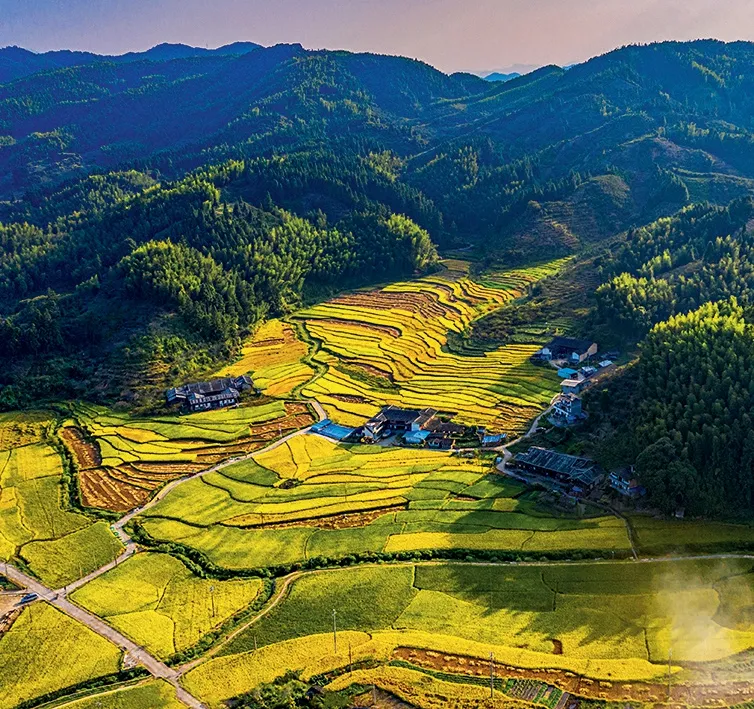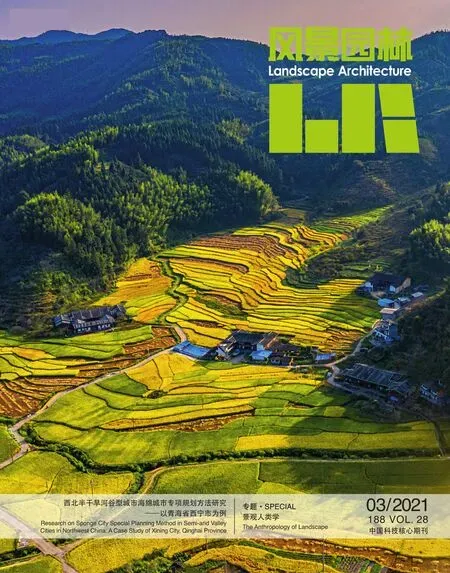探求景观的人文真实

什么是真实的世界?通过怎样的途径才能认识这个真实的世界?这两个本体论、认识论问题一直伴随在人类认识世界、改造世界的过程之中。同样地,在观照眼前纷繁复杂、形态各异的自然和人文景观时,我们也会问,除了视觉表象,还有什么是这些景观的真实本质?特别是对存在于异文化之中的景观,我们获得的视觉意象、科学解释,是否就是异文化族群脑海之中的真实意象?如果不是的话,那怎样才能认识并尽可能准确地转述这种带有文化映射的景观的真实意象?
回顾对景观本质的探求过程,最初被接受的景观真实是从视觉景象中抽象出的风景美。人们认为,通过个体观察和抽象概括的、能够被认识的视觉美感是真实存在的,且是眼前景象的真实升华。基于此,中国古人早在《诗经》《楚辞》之中便有对风景美的称颂,且在魏晋至唐宋时期(220—1279年),便将认识到的这种风景美娴熟地描绘在山水画、山水游记之中,而这种山水审美也绵延至今,成为中华文化的重要组成部分。在西方,《荷马史诗》、希伯来文《圣经·旧约》等也均有关于风景的描写。在宗教神学主导精神生活的中世纪结束之后,文艺复兴的巨匠们方才重拾对世俗美的追求。及至16—17世纪尼德兰革命,新兴起的浪漫主义运动启发了人们对田园风景美的欣赏,通过景深构图方法,风景绘画派画师将所认识到的风景美,以更加立体和真实的方式展示给世人。
19世纪中期,全球性殖民扩张带来的地理空间、认知视野的极速拓展终于促成了现代自然、人文学科体系的建立。在当时的科学主义影响下,人们普遍认为在事物表象之下,存在着另一种抽象的规律性真实。在此背景下,人们对于眼前景象的认知,不再满足于对其美感进行摹写,转而诉诸于基于地理学、地质学、地貌学等科学视角,用抽象规律来解释眼前景象的成因、分布与演进等自然与文化现象。由此,具有视觉景深绘画意义的“景观”(荷兰语:landschap)和社会系统意义的“景观”(荷兰语:landskab,德语:landschaft)被杂糅在一起引入地理学,成了科学视野下的研究对象。在蕴含美学、情感映射的“风景”(法语:paysage)之外,增加了以获得抽象性普遍规律为主要目标的“景观”(英语:landscape)。景观研究的学者相信,这些经抽象归纳、演绎而得到的景观规律超越了人的主观影响,是隐藏在视觉背后、更能反映景观本质的抽象性真实。
然而,20世纪70年代以来,越来越多的学者认识到,对存在于具体时空之中,凝结着特定族群强烈地方情感、族群文化投射的景观,其蕴含的象征意义和情感价值很难通过普遍性规律进行解释。譬如,对于生活在澳大利亚的土著阿南古人而言,世界遗产乌卢鲁巨岩是“大地之母”,巨岩周边灌木丛中安息着该部落祖先灵魂,他们反对纷至沓来的游客,因这是对先祖安息地的打扰,在阿南古人看来,具有强烈人文色彩的景观真实远胜乌卢鲁巨岩地质学、地貌学上的科学性规律的真实。类似案例说明,在具体族群的脑海之中,存在着一种蕴含具体族群情感投射、地方文化、精神信仰的景观真实,这便是“景观的人文真实”。这种“景观的人文真实”不容易用地形地貌、生态植被、空间结构、聚落形态等进行解释;同时,它又是如此的鲜活生动、引人入胜,吸引着无数优秀的风景园林师、建筑师、规划师力求贴合这些地方“文脉”,在设计中唤起当地族群情感上的共鸣。那么,“景观的人文真实”需要怎样的途径才能认识?有无成熟的解析方法?
人类学,作为一门研究“人类文化”的学科,近期被频频提及,进入我们的视野。现代人类学发端于19世纪中叶,经过几代学者的努力,已经建立起了一套解释人类文化现象的理论框架与研究方法体系,并持续发展。20世纪90年代,人类学学者开始将“景观”作为研究对象,从“空间”(space)与“地方”(place)的视角解析景观反映的地方文化与族群意识,因此便出现了“景观人类学”这一新的交叉研究领域。“景观人类学”学科交叉不应是人类学的单向拓展,景观研究者也可借鉴人类学的视野与研究范式,用以探求与具体族群文化和情感映射相关的景观的人文真实。当今,地理学、人类学等学科仍在发展,各自学科内新的研究视野与学术范式也在相继出现,如新文化地理学对文化被“物化”的批判,新文化人类学对“主客位”二分法的反思等,这既为跨学科研究提供契机,同时也带来巨大挑战。对于存在明确认知客体、实践对象的人居环境各学科,应当积极探讨如何立足自身学科特点,批判性地借鉴相关学科研究范式,建立自身基于人文主义视野的景观研究学术框架,这也是本专题更加明确地倡导“景观人类学”这一研究领域的初衷。希望将景观人类学作为一把开启景观人文真实世界的钥匙,在学科间的交流碰撞中,丰富对景观更多维度内涵的认知。

Seeking the Humanistic Reality of the Landscape
What is the real world? Through what way can we know this real world? These two ontological and epistemological questions have always accompanied the process of human’s understanding and transformation of the world. In the same way, when looking at the diverse and complex natural and humanistic landscapes in front of us, we would also ask that what is the real essence of these landscapes behind the visual appearance? Especially for the landscapes that exist in foreign cultures, are the visual images and scientific explanations we get the real images in the minds of foreign cultural communities? If not, then how can we recognize,and as accurately as possible, relay the true imagery of such culturally mapped landscapes?
Looking back at the search for the nature of landscape, the first accepted reality of landscape was the abstraction of landscape beauty from visual scenery. It is believed that the visual beauty that can be recognized through individual observation and abstract generalization is real, and is the real sublimation of the immediate scene. For this reason, the ancient Chinese celebrated scenic beauty as early as inThe Book of SongsandThe Songs of Chu. From the Wei and Jin dynasties to the Tang and Song dynasties (220—1279),this recognized scenic beauty was skillfully depicted in landscape paintings and landscape travelogues, and this landscape aesthetic has continued to these day, becoming an important component of Chinese culture. In the West, landscapes are also depicted in theHomeric HymnsandThe Bible: Old Testamentin Hebrew. It was only after the end of the Middle Ages, when religious theology dominated spiritual life, that the giants of the Renaissance returned to the pursuit of secular beauty. In the 16th and 17th centuries,the Netherlandish Revolution and the newly emerging Romantic movement inspired people to appreciate the beauty of idyllic landscapes. Through the depth-of-field composition method,landscape painters presented the perceived beauty of the landscape to the world in a more three-dimensional and realistic way.
In the mid-19th century, the global colonial expansion brought about an extremely rapid expansion of geographic space and cognitive horizons that finally led to the establishment of the modern system of nature and humanities. Under the influence of scientism at that time, it was widely believed that beneath the appearance of things, there existed another abstract and regular reality. In this context, people were no longer satisfied with copying the beauty of the scene in front of them, but resorted to the scientific perspective of geography, geology and geomorphology to explain the causes,distribution and evolution of the scene in front of them, and other natural and cultural phenomena by abstract laws. As a result,“landscape” (in Dutch: landschap) in the sense of visual depth of field and “landscape” (in Dutch: landskab, in German: landschaft) in the sense of social system were mixed together and introduced into Geography and became an object of study in a scientific perspective.In addition to “scenery” (in French: paysage), which contains aesthetic and emotional mapping, “landscape” was added with the main goal of obtaining abstract universal laws. Scholars of landscape studies believe that these laws of landscape obtained through abstraction and deduction transcend the subjective influence of human beings and are abstract realities that are hidden behind visuals and reflect the essence of the landscape in a better way.
However, since the 1970s, an increasing number of scholars have realized that the symbolic meaning and emotional value of landscapes that exist in concrete space and time, and are embedded with strong local emotions and cultural projections of specific communities, are difficult to be explained by universal laws. For example, for the indigenous Anangu people living in Australia, the World Heritage Ayers Rock is the “Mother Earth”, and the ancestral spirits of the tribe rest in the bush around the rock, they oppose the pouring in of tourists to the rock because it is a disturbance to the ancestral resting place. In the opinion of Anangu people, the reality of the landscape with a strong human dimension is far more important than the reality of the scientific laws of geology and geomorphology of Ayers Rock. These cases show that in the minds of specific communities, there exists a landscape reality that contains the emotional projection, local culture, and spiritual beliefs of their communities, which is the “humanistic reality of the landscape”.This “humanistic reality of the landscape” cannot be easily explained by topography, ecological vegetation, spatial structure,and settlement form. At the same time, it is so vivid and attractive that it attracts countless excellent landscape architects, architects and planners who seek to fit the “cultural lineage” of these places, in a bid to evoke the emotional resonance of local communities in their designs. So, what are the ways to recognize the “humanistic reality of the landscape”? Is there a mature method of analysis?
Anthropology, as a discipline that studies “human culture”,has recently been frequently mentioned and thus entered our vision. Modern anthropology began in the mid-19th century.Through the efforts of several generations of scholars, a system of theoretical frameworks and research methods for explaining human cultural phenomena has been established and continues to prosper.In the 1990s, anthropologists began to use “landscape” as an object of study, analyzing local culture and community consciousness reflected in landscape from the perspectives of “space” and“place”, thus spawning a new intersectional research field of “the anthropology of landscape”.
The interdisciplinary intersection of “the anthropology of landscape” should not be a one-way expansion of anthropology.Landscape researchers can also draw on the vision and research paradigm of anthropology to explore the humanistic reality of landscapes related to the cultural and emotional mapping of specific communities. Nowadays, geography and anthropology are still in prosperity, and new research insights and academic paradigms are emerging in succession in their respective disciplines. For example,the critique of the new cultural geography on the “objectification”of culture and the reflection of the new cultural anthropology on the “subject-object” dichotomy both provide an opportunity for interdisciplinary research, but at the same time poses a great challenge. For each discipline of human habitat environment,which has clear cognitive objects and practical objects, we should actively explore how to base on the characteristics of our own disciplines, critically draw on the research paradigms of related disciplines, and build our own academic framework of landscape research based on humanist vision. This is the initial purpose of this topic to advocate the research field of “the anthropology of landscape” more explicitly. We hope to use landscape anthropology as a key to unlock the real world of landscape humanism, and to enrich the knowledge of landscape in more dimensions through interdisciplinary exchanges and collisions.
Acquiring editor of the current issue: XU Tong
January 17th , 2021

